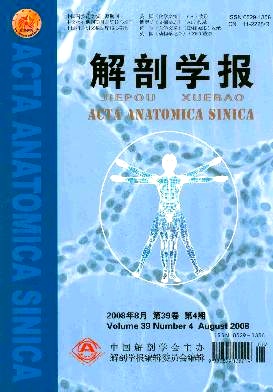|
|
Pentoxifylline inhibits hepatic apoptosis of nonalcoholic steatohepatitis in rats
2009, 40 (2):
250-255.
doi: 10.3969/j.issn.0529-1356.2009.02.016
Objective To investigate the mechanism of apoptosis related gene in the course of NASH and the effect of pentoxifylline on hepatic apoptosis of nonalcoholic steatohepatitis(NASH) in rats. Methods Rats fed a standard diet for one week were randomly divided into eight groups, 8 weeks control group(EM>n/EM>=6), 8 weeks model group(EM>n/EM>=10), 12 weeks control group(EM>n/EM>=6), 12 weeks model group(EM>n/EM>=10), the 12 weeks PTX treatment group(EM>n/EM>=10), 16 weeks control group(EM>n/EM>=6), 16 weeks model group(EM>n/EM>=10), and the 16 weeks PTX treatment group(EM>n/EM>=10), The three model groups and the two PTX treatment groups were fed a highfat diet. Meanwhile the rats fed a standard diet served as control groups .After 8 weeks, the 8 weeks control group and the 8 weeks model group were sacrificed, while the 12 weeks PTX treatment group were given PTX [16 mg/(kgI>&#/I>8226;d)] by intragastric administration. In the end of 12 weeks, the 12 weeks control group ,the 12 weeks model group and the 12 weeks PTX treatment group were sacrificed, while the 16 weeks PTX treatment group were given PTX [16mg/(kgI>&#/I>8226;d)] by intragastric administration. Then all the rats of other three groups were sacrificed at the end of the 16th week. The serum activities of liver alanine aminot ransferase (ALT), aspartate aminotransferase (AST) of all rats were measured. The expression of Bcl-2, bax and Caspase-3 proteins in livers were analyzed by immunohistochemistry, The expression of Caspase-3 mRNA was determined by RT-PCR. Results ALT and AST in three model groups increased significantly compared to the identical control groups. The expressions of Bcl-2, bax and Caspase-3 proteins were increased significantly in the three model groups compared to the identical control groups respectively(EM>P/EM><0.05). The expressions of the 12 weeks and 16 weeks PTX treatment group decreased compared to the identical model groups respectively(EM>P/EM><0.05).Conclusion Apoptosis may play a role in the course of NASH. PTX may reliev
Related Articles |
Metrics
|


